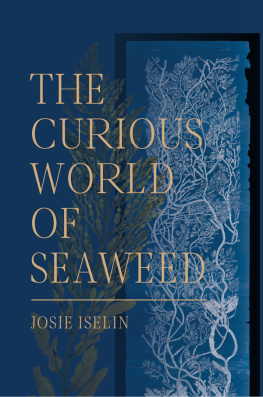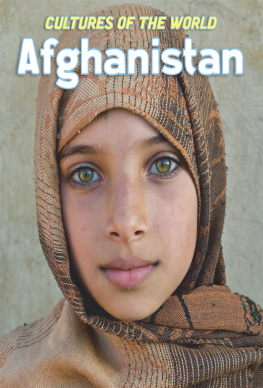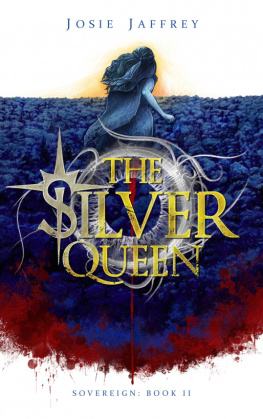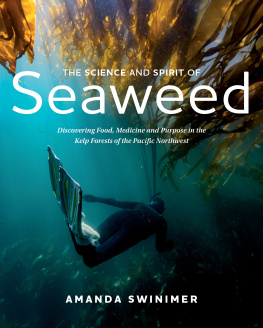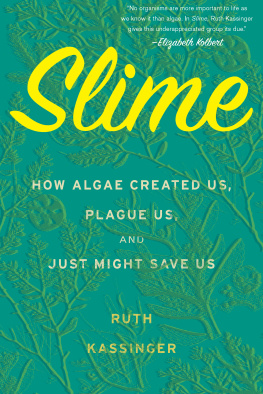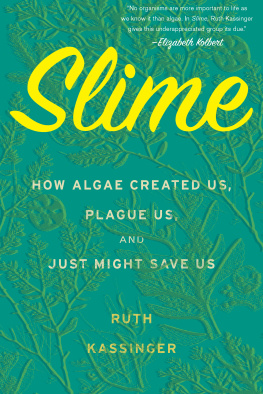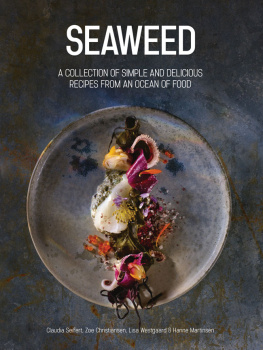Contents
Guide
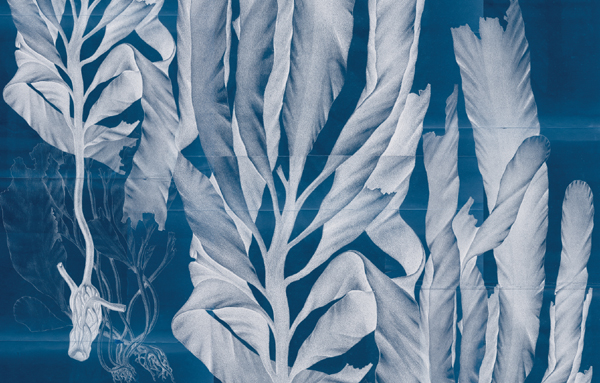
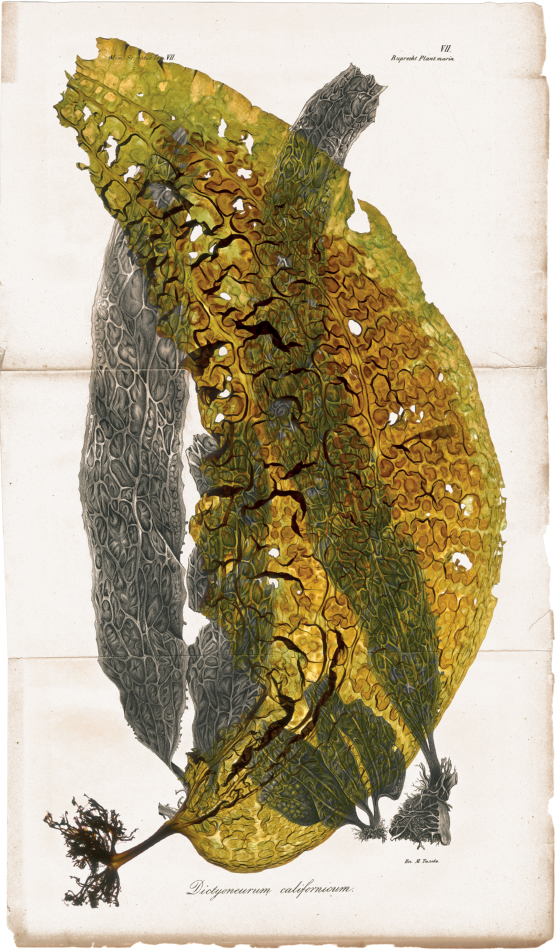
Costaria costata with Dictyoneurum californicum. Image by author, incorporating foldout plate from Ruprecht (1852, pl. VI).
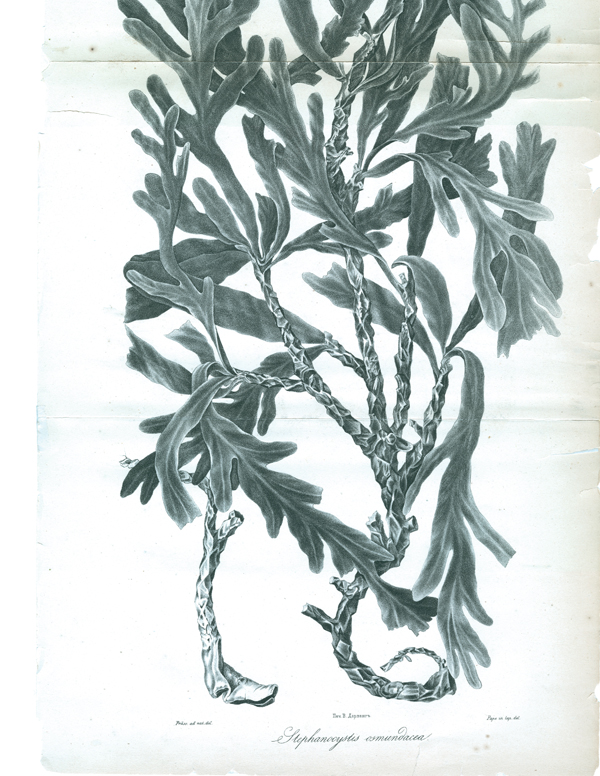
Stephanocystis osmundacea. Foldout plate from Ruprecht (1852, pl. III).
THE CURIOUS WORLD OF SEAWEED
JOSIE ISELIN

Copyright 2019 by Josie Iselin
To K A. P
The publisher is grateful to the following supporters of this project:

All rights reserved. No portion of this work may be reproduced or transmitted in any form or by any means, electronic or mechanical, including photocopying and recording, or by any information storage or retrieval system, without permission in writing from Heyday.
Library of Congress Cataloging-in-Publication Data
Names: Iselin, Josie, author.
Title: The curious world of seaweed / Josie Iselin.
Description: Berkeley, California : Heyday, [2019] | Includes bibliographical references.
Identifiers: LCCN 2019001110 | ISBN 9781597144827 (hardcover : alk. paper) | ISBN 9781597144940 (ePUB)
Subjects: LCSH: Marine algae--Pacfic Coast (North America)
Classification: LCC QK570.5 .I84 2019 | DDC 579.8/1770979--dc23
LC record available at https://lccn.loc.gov/2019001110
Cover Image: Stephanocystis osmundacea (formerly Cystoseira osmundacea) with same. Image by author,
incorporating foldout plate from Ruprecht (1852, pl. III).
Cover Design: Ashley Ingram
Interior Design/Typesetting: Ashley Ingram with Josie Iselin
Cartography by David Deis
Published by Heyday
P.O. Box 9145, Berkeley, CA 94709
(510) 549-3564
www.heydaybooks.com
10 9 8 7 6 5 4 3 2 1
CONTENTS
NOTE ON ILLUSTRATIONS
As artist and designer, I worked with every image to create the best visual narrative for each seaweed story. The simple scans of marine algae were made in my studio between 2007 and 2018. Identified by species, these seaweeds were collected on walks on the beaches of California and on field trips and excursions up and down the Pacific Coast. The illustrations on are part of my photographic series, Algal Dreams: Contemporary Scans on Historical Seaweed Descriptions. There are also a few cyanotype prints made in my studio using my own seaweed specimens. These can be recognized by their Prussian-blue color. On two of them I have filled the white seaweed shadow with the colorful seaweed scan: a true combination of new and old photographic nature-printing techniques.
Herbarium specimens are courtesy of the University and Jepson Herbaria at the University of California, Berkeley. These I downloaded from the universitys digitized collection and reworked to erase the color and scale bar reference and barcode. They are captioned by species and with their catalog ID numbers. The collection data is not repeated in the caption if it is clearly visible with the specimen pressing.
The older lithographs and historical book pages are from Franz Josef Ruprechts report New or incompletely known plants from the northern part of the Pacific Ocean (1852), Alexander Postels and Franz Josef Ruprechts Illustrationes algarum (1840), S. G. Gmelins Historia fucorum (1768), William Henry Harveys Nereis Boreali-Americana (1852, 1853), and Dawson Turners Fuci (1808). Ruprechts 1852 plates and those by William Henry Harvey and Dawson Turner were scanned in my studio. The Postels lithographs from Illustrationes algarum are courtesy of the University of Southern California, on behalf of the USC libraries. S. G. Gmelins plates from Historia fucorum were digitized by the Marian Koshland Bioscience, Natural Resources, and Public Health Library at UC Berkeley. Exceptions are noted in the captions.
Drawings on is reproduced with permission provided by Cambridge University Press.

Macrocystis pyrifera, apical tips collected by R.S. Esqueran, June 6, 1949, off La Jolla, California. University Herbarium, University of California, Berkeley, no. 1833823.
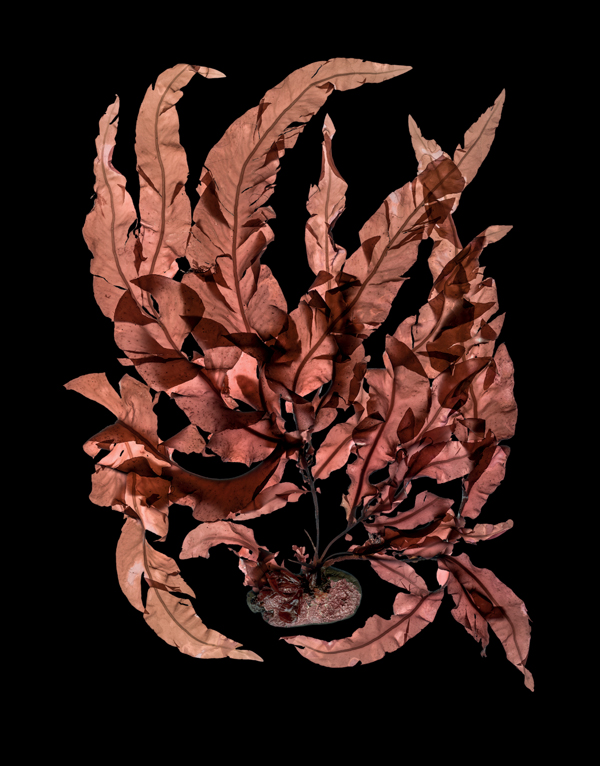
Erythrophyllum delesserioides. Opposite: Microcladia coulteri. University Herbarium, University of California, Berkeley, no. 1107686.
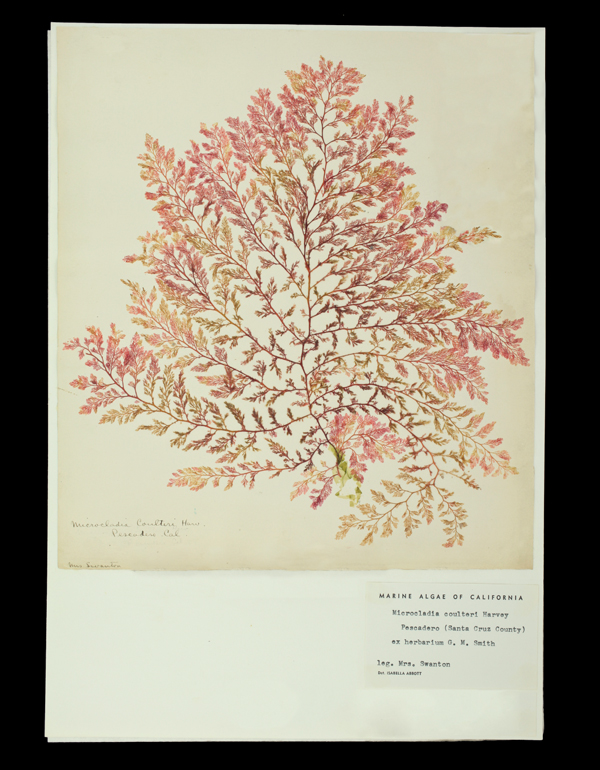

INTRODUCTION
The thin region where the sea meets the land is unlike either land or sea. It is betwixt and between, a threshold from one state to another. It is a linear point or a coastal ribbon, a place of dramatic change and remarkable abundanceabundance of life and also of possibility. The regions where continents meet the great oceans of our planet are long stretches of liminal space.
From the continents point of view the approach to an ocean is usually through dunes or over a cliff to a sandy beach, a rocky coast, or a cobbled shore. The littoral region extends from the terrestrial land to the edge of the water at the lowest tides, where it gets swallowed by the marine world. From the oceans perspective, the approach to the worlds great landmasses is from the deep and dark pelagic up over a continental shelf into a dim region where light barely penetrates the waters and on up into a brighter photic zone, what might be called the subtidal, and continues into the low intertidal where the extreme full-moon tides pull away the water once or twice a month, up towards the beach or rocky reef where the ocean swells in and out in six-hour cycles, up finally to the highest tide mark, the wrack line, where the ocean leaves its debris to mark a final encroachment towards dry land.
This sliver of ocean, where sunlight penetrates enough to allow photosynthesis to work its magic and where the benthos, or ocean bottom, provides something to hold onto, is the home of the seaweeds, or marine algae. Seaweeds have three requirements for survival: a substrate to hold onto to keep them in one place, sunlight to provide the energy for primary production of biomass, and nutrients to fuel growth. The thin section of ocean from the intertidal zone to about three hundred feet deep is where the ocean flora find these three elements for success and where they reside. This is a miniscule sliver of ocean area, less than 2 percent of the entire sea floor, and yet it is a zone of incomparable richness, where marine algae are the supreme eco-engineers. They oxygenate the waters, create three-dimensional habitat for countless other organisms, and form the base of a food chain that keeps our planet unique in the universe as we know itopulently rich in life.

